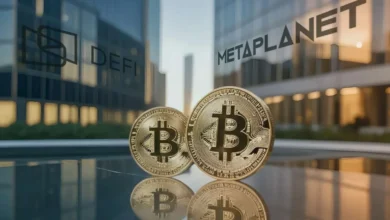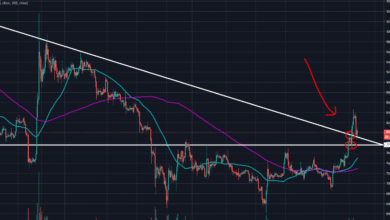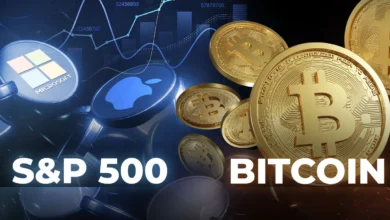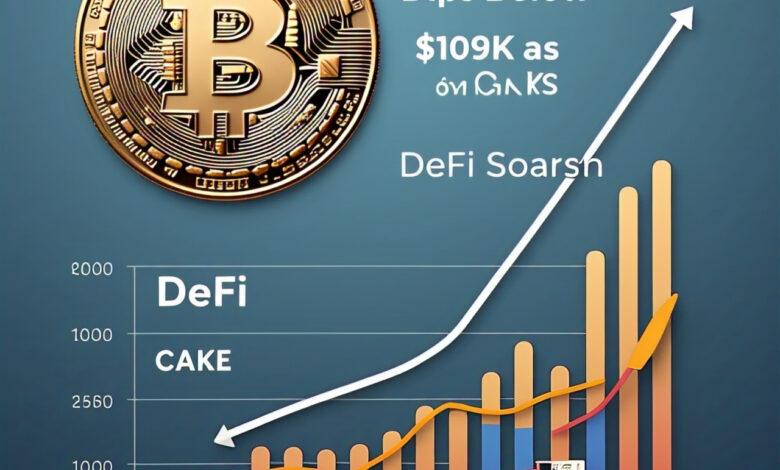
Bitcoin Dips Below $109K as CAKE Soars on DeFi and BSC
Investors are still enthralled with Cryptocurrency Markets; today, May 27, 2025, marks another erratic chapter in the always-changing digital asset field. After a notable surge in recent weeks, Bitcoin (BTC), the flagship cryptocurrency that usually sets the market’s tone, dropped significantly below the $109,000 level.
Driven by underlying advances in distributed finance (DeFi) and Binance Smart Chain (BSC) activities, PancakeSwap’s native token, CAKE, ranked remarkably among the daily gainers. This paper seeks to thoroughly examine today’s price swings, investigate the fundamental causes driving these patterns, and provide an understanding of the broader consequences for market players and crypto aficionados.
Bitcoin’s Price Dip Interplay of Markets Policy
Notable for multiple reasons, Bitcoin’s decline below $109,000 on May 27 reflects the complex interaction of macroeconomic constraints, technical trading patterns, and changing investor mood. Following several all-time highs—at times exceeding the $120,000 mark—Bitcoin’s price fall emphasizes the inherent volatility of cryptocurrencies.
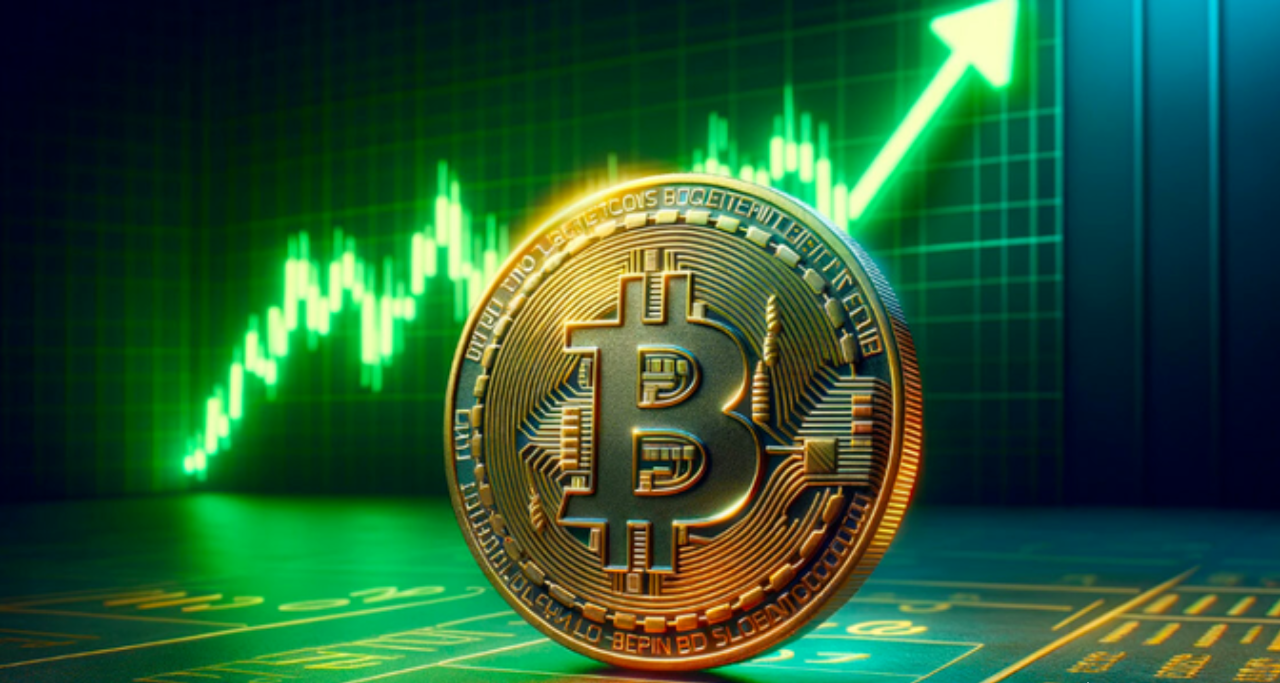
Macroeconomically, ongoing inflationary worries and uncertainties about central bank policies have pressured worldwide financial markets. Recent warnings from the U.S. Federal Reserve about a possible interest rate increase have caused a wary attitude among investors. Such monetary tightening has historically tended to lower liquidity, which drives risk-averse actions and lowers speculative assets like Bitcoin. The Federal Reserve Chair, Jerome Powell, has often underlined the need for rigorous inflation control, which markets see as indicating tighter lending conditions ahead.
This decrease has several ramifications. A little retracing is sometimes seen as a beneficial market correction that preserves future growth by long-term holders and institutional investors. On the other hand, day traders and short-term speculators would see this as a chance to re-enter at lower rates. Crucially, Bitcoin’s function as a “store of value” still draws interest, particularly in view of global economic uncertainty and worries about currency devaluation.
CAKE Surges Amid BSC Growth and DeFi Optimism
Unlike the downturn in Bitcoin, CAKE, Pancakeswap’s native token, came out as the top performer for the day, offering significant gains. Operating on the Binance Smart Chain, PancakeSwap has positioned itself as a major participant in the DeFi ecosystem by providing quicker transactions and cheaper fees than rivals based on Ethereum.
Various vital elements support the price increase of CAKE today. First, new cross-chain interoperability tools and better liquidity mining incentives have made PancakeSwap more functional thanks to recent protocol changes. These improvements usually translate into higher demand for the native token, drawing more liquidity and user engagement on the platform.
As developers and consumers search for scalable substitutes for Ethereum’s crowded network, Binance Smart Chain keeps gathering steam. Relatively cheap transaction costs and BSC’s strong infrastructure have created a vibrant ecosystem of DeFi initiatives, NFTs, and yield farming prospects. CAKE gains a governance token and a reward medium from this ecosystem expansion for different staking and farming projects.
Regulatory uncertainties and past security failures have caused investor mood toward DeFi to recover from a brief period of doubt. Positive changes in BSC initiatives and the rebirth of trust inspire speculative interest in tokens like CAKE. PancakeSwap’s creative community governance approach enables token holders to suggest and vote on platform modifications, thereby improving the token’s inherent value and attracting market players.
Institutional Adoption Drives Crypto Innovation
The scene of cryptocurrencies now shows a more complete story of cautious involvement and selective optimism. Although Bitcoin and Ethereum still hold the highest market capitalization among assets, their price swings have been more subdued than those of certain rising altcoins. Variable price changes in Binance Coin (BNB), Cardano (ADA), Solana (SOL), and other Layer 1 protocols reflect continuous network upgrades and ecosystem changes.
One significant macro trend is the growing involvement of traditional financial firms and institutional investors in bitcoin markets. Public firms such as MicroStrategy, Tesla, and BlackRock have included cryptocurrencies in their portfolios, giving the industry credibility and consistency. Along with this institutional flood, governments—especially in the United States, the European Union, and Asia—are developing their policies. Still, a major driver in the business is the harmony between consumer protection and innovation-friendly rules.
Decentralized finance’s continuous development is changing investor interaction with digital assets. DeFi apps like PancakeSwap democratize access to financial services without intermediaries, including lending, borrowing, and derivatives trading. Despite sporadic government inspection, this change has spurred a new wave of technological and economic innovation that keeps drawing fresh investments.
Key Influences and Trends in the Evolving Crypto Market
Influential people still shape the market mood in the field of cryptocurrencies. Through his social media activity, Elon Musk, for instance, has historically influenced pricing, affecting Bitcoin Hits, Dogecoin, and other cryptocurrencies. Policymakers like Jerome Powell and regulatory bodies like the U.S. Securities and Exchange Commission (SEC) also significantly impact market views through policy decisions and execution activities.

The expansion narrative of cryptocurrencies revolves mostly around technological developments. With Ethereum’s continuous switch to Ethereum 2.0, scalability and energy efficiency should rise, perhaps changing the scene for DeFi and NFT. Concurrent with Binance Smart Chain’s aggressive expansion and reduced costs is a growing user base drawn in by them, supporting CAKE’s upward trajectory.
Excellent real-time data provided by analytical sites such as CoinMarketCap and CoinGecko helps traders and investors make informed judgments. On-chain analytics tools can show wallet activity, transaction volumes, and token distribution, strengthening knowledge of market dynamics.
Final thoughts
Linking to comprehensive materials like “Understanding Bitcoin’s Price Cycles, “Top DeFi Tokens to Watch in 2025,” and “How Binance Smart Chain Is Changing Crypto Trading” can help readers looking for more understanding to be more topical, relevant, and engaged. These internal tools enhance the general SEO structure and support site authority.
Linking to reputable sources, such as asthe official Binance Smart Chain documentation, the Federal Reserve’s policy announcements, CoinDesk’s market reporting, and university studies on blockchain technology , can help strengthen legitimacy and enhance user experience. These references give readers reliable, thorough knowledge to augment the study of the subject.

